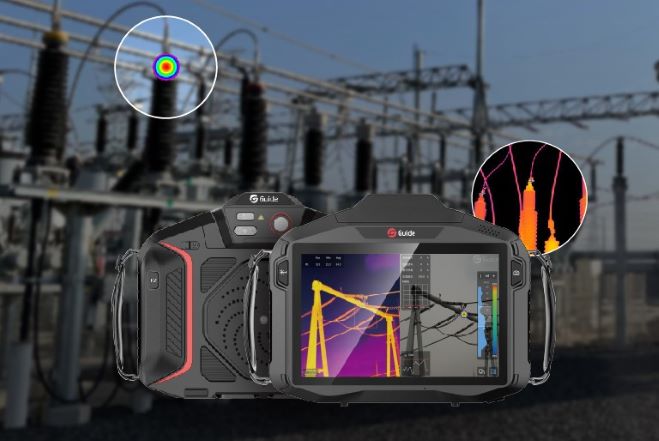Thermal Night Vision Monocular
A thermal night vision monocular is a must-have for anyone who wants to see it in the dark. Whether you are shopping for one because you’re a hunter, security guard, or just someone who loves exploring the great outdoors at night, a thermal imaging monocular is a perfect tool you need to see objects with clarity at night so you won’t waste a shot at a target or get too near to a predator or something scary.
If you have seen ads about infrared monocular for sale but don’t want to commit to a purchase until you know what to look for in thermal imaging monocular, you’ve come to the right place. It’s important to know what to look out for in a thermal monocular, so you can find the best device that suits your needs.
How to choose a thermal night vision monocular
The best thermal imaging monocular has built-in capabilities that let you see in the dark and through the fog, smoke, or obscurants to see animals that typically go undetected. But this is impossible if the thermal monocular doesn’t have some specific features. Let’s dive into the most important features you must consider so you can have confidence in your buying decision.
1. Microbolometer
A thermal monocular is a device capable of detecting animals by their heat signatures using a sensor. The sensor is known as the microbolometer, and its resolution is measured in pixels. Like regular cameras, the higher the number of pixels, the greater the level of detail you will see. If you’re looking to capture high-quality images, be sure to choose a thermal monocular with a sensor that boasts plenty of pixels.
2. Lens size
The next thing to consider is the size of the lens, as it determines the maximum distance that a thermal monocular can capture. The lens comes in different sizes, and their maximum detection distance varies accordingly. Depending on your choice, thermal monocular lenses have a detection range of 90 meters to over 1.5km.
The idea is that the larger the lens, the more the detection range. However, keep in mind that the detection range is inversely proportional to the field of view. With this in mind, you might want to choose a thermal night vision monocular that offers you adequate detection range while providing sufficient FOV.
3. Sensitivity (NETD)
NETD (fully known as Noise Equivalent Differential Temperature) is the parameter that describes the sensor’s ability to detect even the minutest differences in temperature in the thermal radiation of an image. The smaller the NETD of a thermal monocular, the more sensitive it is, and that means you will get clearer, more precise images. You can tell the sensitivity by checking the specifications. If it reads NETD<25mK, it means that the minimum temperature difference it can detect is 0.025°C.
4. Field of View (FOV)
The field of view of a thermal monocular refers to the angle at which the lens captures a target object. It measures the width of the area you can see when you look through the lens, delivering a broader picture of the scene. FOV is measured in degrees and ranges from 7-20.
The field of view goes hand-in-hand with the magnification in that higher magnification decreases the FOV you will have. If you need to scan wide-open spaces, a large FOV may be right for you, but if you would rather see far instead of a magnified small area, a monocular with a small FOV might be right for you. It all boils down to your needs.
5. Detection range
If you’re planning to detect targets from a long distance, you will have to consider the detection range of a monocular. Detection range allows you to pick heat signatures from a distance. It is recommended to go for a device that can manage over 1,000 meters to provide images with great clarity. However, the ability to tell whether the target is a human or animal is another factor to consider, and for that, you will need to check the identification range.
6. Durability and Warranty
Thermal night vision monoculars can be expensive, so it is important to factor in durability when checking out a monocular, or else you will be replacing it shortly. You can tell how durable a product is by checking the materials it’s made of as well as its IP rating. Most great monocular are completely waterproof and shockproof.
Also, the best thermal monocular can last up to 10 years if properly maintained. Nonetheless, check for the warranty to get your money back if the product doesn’t meet your expectations.
7. Battery
The type of battery a monocular uses and how long it lasts is among the things to look out for. Some thermal monocular come with built-in integrated batteries, while others come with a replaceable battery pack. While the former offers stability and durability, the latter promotes portability and extended use. Most thermal imaging monocular batteries last 4 hours, but if you plan to hunt for a long time, consider going for those with a runtime of 6, 8, or 10 hours.
8. Size and weight
The best thermal monocular strikes a balance between size and weight, allowing them to be portable. If the device is large and heavy, carrying it can quickly become a burden. But if it’s too small, you may not enjoy using it as it means the components will be small-sized and hard to use. It is always best to choose a model you can easily fit into a pack and conveniently carry.
Conclusion
A thermal night vision monocular is an awesome tool that allows you to see what your eyes alone can’t see. Armed with the information above, you can easily tell when next you see an infrared monocular for sale if the device will make a great buy. If you’re looking for a high-quality thermal monocular that meets the requirements above, check out our store today, as we have great infrared monocular for sale.













.svg)

(1).jpg)
.jpg)


